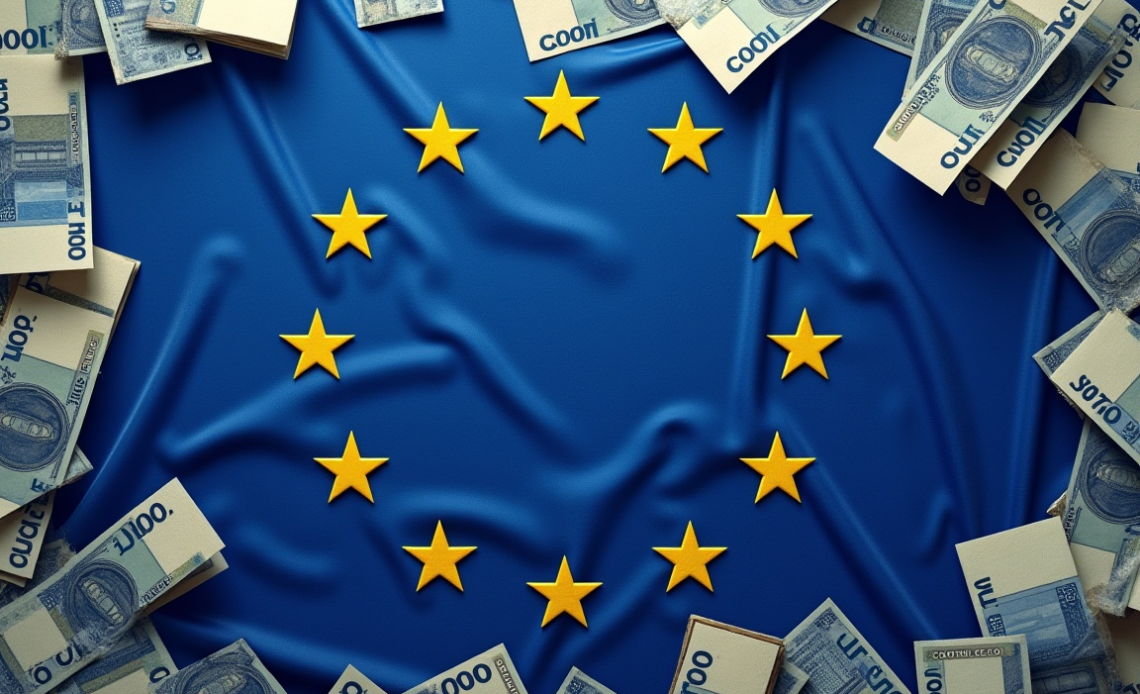
Europe’s public finances are starting to look like a slow-motion car crash that everyone sees coming.
All of the region’s governments are ramping up spending, borrowing, and their promises. Unfortunately, growth is not able to keep up with them.
But the situation is unsustainable. Higher rates, aging demographics, defence and green investment needs are taking the region to its breaking point.
Does Europe’s fiscal model make sense anymore?
The bill is getting heavier
The International Monetary Fund’s latest forecast shows the eurozone’s combined budget deficit widening from 3.2% of GDP in 2025 to 3.7% by 2030.
Debt was able to stabilize following the post-pandemic recovery, but is now climbing again. EU’s debt is projected to rise from 87.8% in 2025 to 92.2% by the end of the decade.
France’s debt is projected to rise from 116% to 129% of GDP, Belgium’s from 108% to 123%, and Germany’s from 64% to 74%.
What’s ironic is that these countries are usually seen as models of fiscal discipline. Italy’s debt, already one of the highest in the world, will stay near 137%.
In the meantime, countries like Portugal, Ireland and, Greece are still reducing their ratios, having learned from past crises.
The IMF calls Europe’s debt path “explosive”. Under current policies, the average ratio could reach 130% of GDP by 2040.
That would put Europe’s public finances roughly where Japan’s are today, but without Japan’s savings rate or currency advantage.
Spending like there is no tomorrow
Europe’s spending boom is not driven by waste but by the return of politics.
Germany is now running an expansionary budget to boost growth and defence.
France is stuck with a deficit above 5% of GDP and a fragmented parliament unable to agree on cuts.
Belgium is struggling to pass a budget.
Defence spending is heading toward 3.5% of GDP by 2035. Energy security, the green transition and pension and health systems add another 4% to 5% of GDP in spending pressure over the next fifteen years.
The IMF calculates that even before new promises, interest payments alone will absorb a growing share of national income.
In the UK, interest on the debt already costs more than defence or education. More than half of the population receives more from the state than it pays in taxes. Nine million people of working age are economically inactive.
The government plans to raise taxes yet again, not because it wants to, but because it has run out of alternatives.
The pattern is visible across the continent. By 2050, two-thirds of EU countries will see a decline in their working-age population. Fewer workers mean fewer taxpayers.
Combine that with high social spending, weak productivity and slower growth, and that’s a recipe for disaster.
Europe’s GDP per capita is now nearly 30% below the United States and still drifting lower.
Markets are watching again
The European Central Bank has always been a safety net. Rates were near zero and investors believed governments could always borrow more.
But things look worse now. Around 40% of the eurozone’s public debt must be refinanced within three years.
Even a modest jump in yields could add close to half a percentage point of GDP in extra interest costs across the region.
The Bundesbank has begun to sound uneasy. In its latest financial stability report, it warned that high public debt in Europe now poses a risk to German banks, which hold large amounts of European sovereign bonds.
Non-performing loans are rising, especially in commercial property.
Rethinking what the state can do
Europe cannot cut its way out of this without wrecking its economy, but it cannot keep spending as it does either.
Their answer is to grow faster and spend more efficiently.
That means completing the single market for services, reforming pensions to keep people in work longer, and encouraging private investment to fill the gaps in public funding.
If those steps fail, Europe may need to redefine what the state provides for free. In practical terms, that means separating basic services, which remain free, from premium ones that could involve user payments.
It also means tax reform, privatisation of state assets in some countries, and deeper capital markets to attract private investment.
The decade of hard choices
The continent’s ageing societies, new security commitments and slow productivity make it harder each year to square the numbers.
As the Bundesbank worries about stability and the IMF warns about sustainability, the political message is that growth alone will not save the European model, but neither will denial.
For now, leaders prefer to delay the reckoning. Budgets are stretched, voters are tired, and interest payments rise quietly in the background.
Europe can no longer afford to act rich without first finding a way to be rich again.
The post Does Europe have a debt problem? appeared first on Invezz






